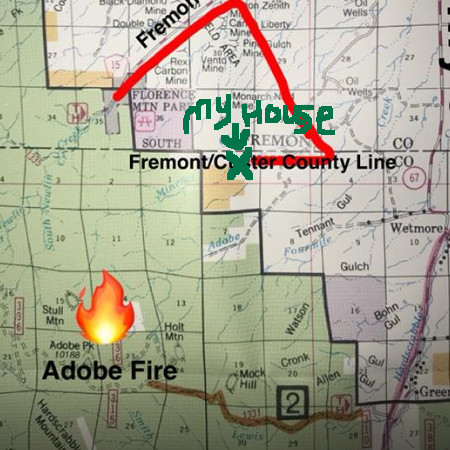Listen to this article
Before I got the call from dispatch telling me we were under a pre-evacuation notice, I was standing in the yard to see where the smoke was coming from. I packed the car with that feeling of dread you only get when deciding which of your worldly possessions you have time to grab, and which are even going to fit. It’s a heck of a feeling. I was also pondering where we would go—7 people, 6 dogs, 1 cat, 1 horse (and the horse trailer), 10 chickens, and 1 turkey—quite the bunch. Half of us immediately said, “Go to the library! We can regroup in the parking lot and figure everything out.”
In times of crisis, community is essential, and libraries stand out as a place to go for information, safety, even bathrooms; it is a place we all know.
The other thing we were all doing was checking social media. Why Facebook and Twitter during an emergency? By following the official  hashtag, #AdobeFire, we could easily find up-to-date information on the evacuation, containment, and wind conditions critical to deciding whether to go or wait longer.
hashtag, #AdobeFire, we could easily find up-to-date information on the evacuation, containment, and wind conditions critical to deciding whether to go or wait longer.
It is strange to think about “following” a fire on social media—certainly not something I would have imagined 10 years ago. And it made me highly aware of my older neighbors who were relying on us to get them up-to-the-minute information. It was amazing how fast my neighbor learned about Twitter when fire and evacuation were imminent
What do you have in place for your community if disaster strikes?
Disaster planning is something we all should think about. You probably have a “Disaster Plan” binder on a shelf that contains good information about communicating with officials and city management, plus emergency library procedures. But what else can your library do to help during a disaster? There are a few things that you might want to consider from a technology perspective. You could connect a laptop to a large monitor or TV to show folks the latest information. You could embed a Twitter stream on your website that follows the hashtag of the disaster, that way anyone can see the latest news without needing to learn a new technology on the fly. You could also announce your emergency services for the disaster on social media using the official hashtag to reach a wider audience. What is in your library’s disaster plan that helps connect your community to important information?
We didn’t need to evacuate yesterday. We might yet today. The Volunteer Fire Department and the Forest Service are doing their best to keep the fire at bay. The smoke has cleared, and the air only smells slightly of campfire. The wind has started to gust. The fire is only 3 miles from my house and my car is still packed just in case. With many wildfires burning in our state right now, and with probably several more to come this season, there are many people in my situation. Luckily, the library is our neighborhood rendezvous spot, just as your library is a resource for your community in times of need. My local library will even open after hours if we need it. The library is an essential part of the community that I love.
- Happy National High Five Day! - April 18, 2024
- Bringing in the Money: How Friends and Foundations Can Find Funding & Grants - March 20, 2023
- The Emergency Connectivity Fund Program - December 1, 2022